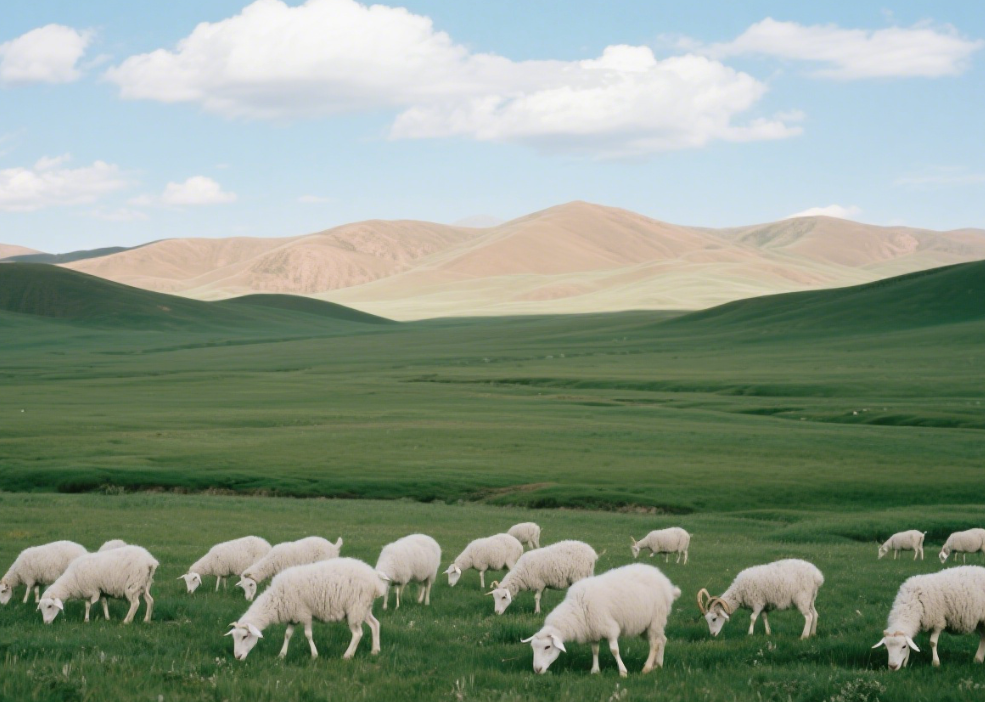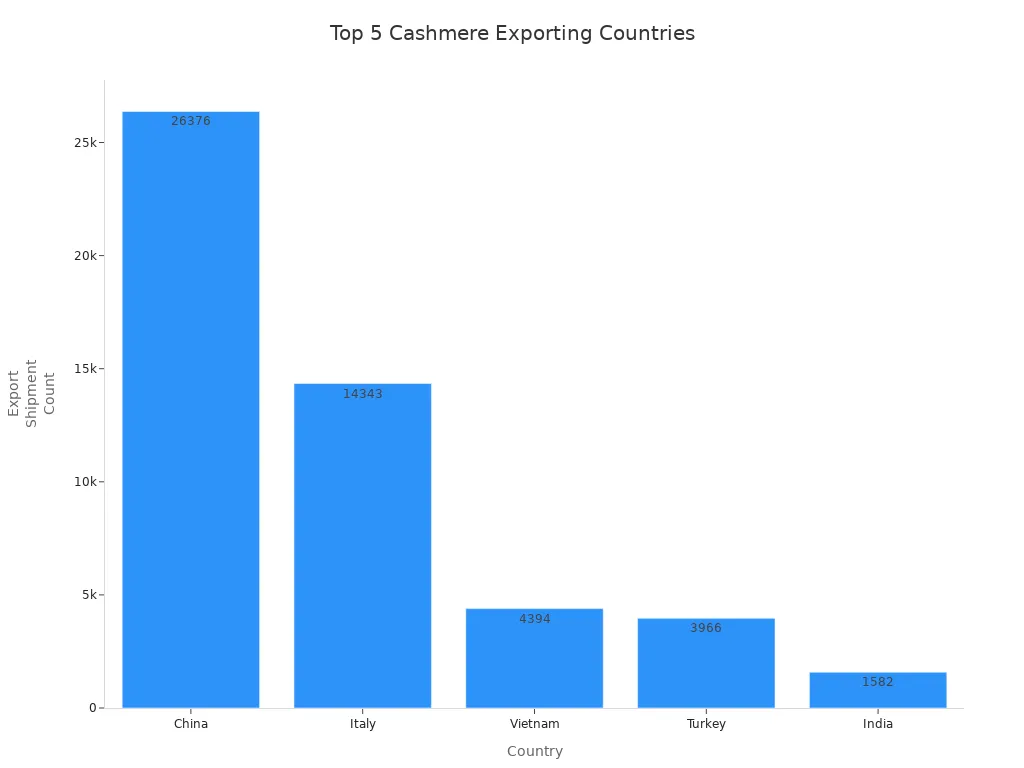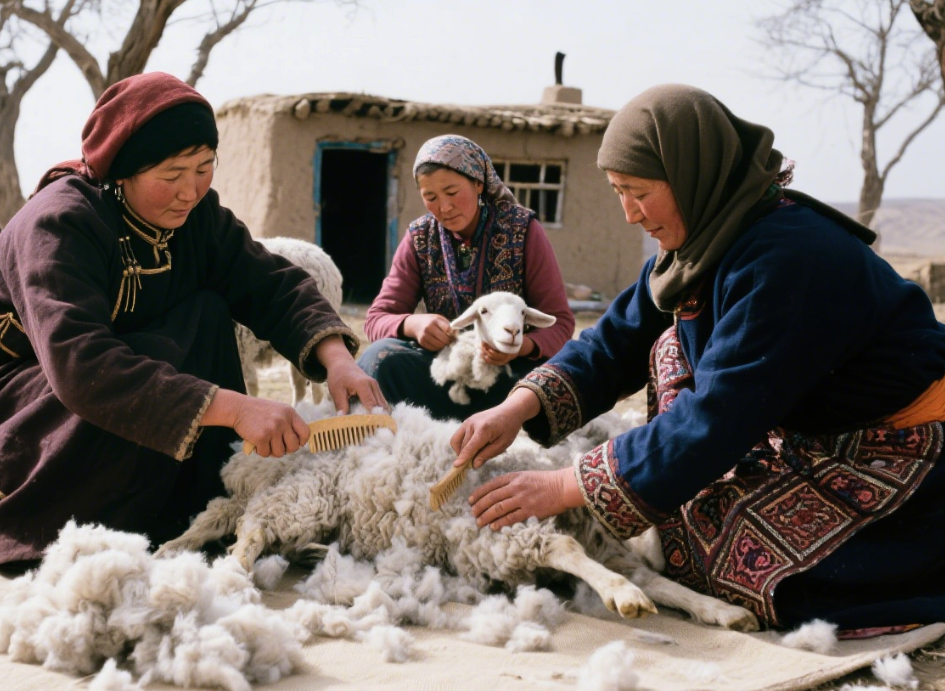Curious about who leads the global cashmere market? Look no further! China, with its vast production and export capabilities, stands as the largest exporter of cashmere. From the chilly grasslands of Inner Mongolia to luxury stores worldwide, Chinese cashmere has made its mark. Discover how China’s advanced technology, large-scale operations, and commitment to quality keep it ahead. Dive in to learn more about the key players, market trends, and what makes Chinese cashmere so sought-after. Let’s explore together!
Largest Exporter Overview
China’s Leading Position
China holds the title of the largest exporter of cashmere in the world. The country produces more than half of the global supply, with most cashmere coming from Inner Mongolia. Chinese companies process raw cashmere into high-quality products and ship them to many countries. The industry in China benefits from advanced technology and large-scale operations. This allows Chinese exporters to meet the high demand for cashmere in international markets.
Chinese cashmere companies send their products to many developed regions. The following table shows some leading exporters and their main destinations:
Exporter Company | Main Export Destinations |
Hohhot XueQi Cashmere Products Co., Ltd. | United States, Europe, Australia, other developed regions |
Hohhot Harmony Industry and Trade Co., Ltd. (North Land Cashmere) | UK, Europe, Japan, Korea, North America |
Saihan Anda Cashmere Products Co., Ltd. | Europe, United States, South Korea, Japan, Australia |
Inner Mongolia Field Textile Products Co., Ltd. | USA, Canada, Australia, Eastern Asia, South America |
China’s strong position as the largest exporter comes from its ability to supply both raw and finished cashmere to these markets. The country’s factories can process large amounts of fiber quickly and efficiently. Many buyers around the world trust Chinese cashmere for its quality and consistency.
![China’s Leading Position China’s Leading Position]()
Mongolia and Other Key Exporters
Mongolia stands as the second-largest exporter of cashmere. The country produces about 9,500 tons of raw cashmere each year. This amount makes up nearly 40% of the world’s supply. Mongolia’s cashmere industry has grown over time, with export values reaching a peak of about 247.9 million USD in October 2018. The monthly export value often stays around 31.8 million USD, but it can change from year to year.
Mongolia and China together control about 93% of the world’s raw cashmere market. Mongolian companies, such as Gobi JSC, hold a strong position in both domestic and global markets. Gobi JSC alone controls 71% of the Mongolian market for finished cashmere products. Many experts recognize Mongolia for its wide range of natural fiber colors and fine quality. While other countries like Iran and Afghanistan also export cashmere, their market shares remain much smaller compared to China and Mongolia.
Key facts about Mongolia and other exporters:
Mongolia supplies up to 40% of global cashmere.
Mongolian cashmere is known for its softness and color variety.
Other exporters, such as Iran and Afghanistan, play smaller roles in the global market.
China and Mongolia lead the world as the largest exporters of cashmere. Their combined efforts shape the global cashmere industry and set the standard for quality and supply.
Global Cashmere Export Rankings
Export Volumes by Country
Countries around the world export cashmere in different amounts. China leads the rankings with the highest number of export shipments. Italy, Vietnam, Turkey, and India also play important roles in the global market. The following table shows the top five countries by cashmere export shipment count in the most recent year:
Rank | Country | Export Shipment Count |
1 | China | 26,376 |
2 | Italy | 14,343 |
3 | Vietnam | 4,394 |
4 | Turkey | 3,966 |
5 | India | 1,582 |
![Bar chart comparing cashmere export shipment counts for China, Italy, Vietnam, Turkey, and India]()
China stands out as the largest exporter, sending more than 26,000 shipments. Italy follows with over 14,000 shipments. Vietnam, Turkey, and India each contribute thousands of shipments as well. These countries help supply cashmere to markets all over the world.
Market Share Comparison
China produces nearly 70% of the world’s cashmere. Inner Mongolia alone accounts for about 40% of global processing output. Mongolia comes next, providing more than 20% of the world’s supply. Mongolia’s cashmere sector supports about 30% of its population and makes up 13% of its national GDP. Iran and Afghanistan produce smaller amounts and do not match the export volumes of China or Mongolia.
Country | Cashmere Production Contribution | Export Volume/Significance |
China | Nearly 70% of world production | Largest producer; Inner Mongolia alone produced 6606.8 tons in 2018, accounting for 70% of China's resources and 40% of global processing output |
Mongolia | More than 20% (approx. 3000 mt) | Cashmere is Mongolia's second largest export by trading volume; sector employs ~30% population and contributes ~13% GDP |
Iran | Smaller quantities produced | No explicit export volume data available |
Afghanistan | Smaller quantities produced | No explicit export volume data available |
China and Mongolia together control most of the world’s cashmere exports. Their strong positions shape the market and set the standard for quality and supply.
Why China Is the Largest Exporter
Production Scale
China leads the world in cashmere production because of its massive goat population. Farmers in China raise more cashmere goats than any other country. The following table shows the estimated number of cashmere goats in different regions:
Region | Estimated Cashmere Goat Population | Year |
China (total goats) | 123 million | 1994 |
Inner Mongolia (China) | 2.3 million | 1994 |
Tibetan Plateau & Valley (China) | >7 million | 1994 |
Mongolia (percentage of livestock) | 60% of all livestock (exact number not stated) | Recent |
Mongolia (cashmere production) | >7,000 tons | 2015 |
China’s large number of goats allows it to produce more raw cashmere than any other country. Inner Mongolia and the Tibetan Plateau are key regions for goat herding. Mongolia has increased its goat population over the years, but China remains the largest exporter because of its scale.
![Production Line Production Line]()
Processing Capacity
China supplies about half of the world’s raw cashmere. This makes it the top supplier of raw material. However, when it comes to processing, countries like Italy and the United Kingdom have more advanced facilities. They lead in turning raw cashmere into finished products. Still, China has made big improvements in its own processing methods. Factories in China use new machines and better techniques to clean, sort, and spin cashmere fibers. These steps help increase the quality and amount of cashmere that China can export. Chinese factories use advanced machines for carding, spinning, and weaving. They also test fibers for softness and strength. These improvements help China keep its place as the largest exporter.
Quality and Reputation
The Asia-Pacific region, including China, is known for producing high-quality cashmere. Chinese companies mix traditional skills with modern technology. This combination helps them make soft, strong, and beautiful cashmere products. Brands like Erdos have gained international respect by using Inner Mongolian cashmere and meeting global luxury standards. The table below shows some certified companies and their quality standards:
Company Name (China) | Certification/Standard Details | Fiber Quality Parameters |
Hebei Yuhong Cashmere Products Co. Ltd | Good Cashmere Standard® | Fineness: 13.5-16.2 microns; Length: 28-44 mm |
Inner Mongolia Field Textile Products Co., Ltd. | Good Cashmere Standard® | Fineness: 15.8-16 microns; Length: 22-36 mm |
Huzhou Kekexilil Cashmere Co. Ltd | Good Cashmere Standard® | Fineness: 15.5-16.5 microns; Length: 30-38 mm |
Chinese cashmere enjoys a good reputation, but fake products sometimes appear in the market. These can hurt the image of real Chinese cashmere. Still, most buyers trust Chinese cashmere for its quality and value.
Cashmere Production Process
From Goat to Fiber
Cashmere production starts with the goats. Farmers collect cashmere during the spring molting season. Most choose gentle combing to remove the soft undercoat fibers. This method keeps the goats healthy and produces the best quality fiber. Some farmers use shearing, but combing is more common for high-grade cashmere.
The journey from goat to fiber involves several steps:
Combing or Shearing: Farmers collect the fine undercoat by combing or shearing the goats.
Sorting and Grading: Workers sort the raw fibers by color, length, and cleanliness. They grade the fibers based on diameter and staple length.
Cleaning and Washing: The sorted fibers are washed to remove dirt, grease, and plant matter. Clean fibers dry in controlled conditions.
Dehairing: Machines remove coarse guard hairs, leaving only the soft cashmere.
Preparation for Spinning: The pure fibers are now ready for spinning into yarn.
Processing and Grading
After collecting and cleaning, the cashmere moves to processing and grading. Factories use carding machines to align the fibers. This step creates a continuous web, which improves yarn quality. Spinning machines twist the fibers into strong, fine yarn. Some producers dye the fibers or yarn using eco-friendly dyes for consistent color.
Grading plays a key role in the process. Workers test the fiber for fineness, length, and color. The best cashmere has a diameter of 13.5 to 16.5 microns and a length of 28 to 44 millimeters. Factories check for strength and softness before weaving or knitting the yarn into garments.
Grading Criteria | Description |
Fineness | 13.5–16.5 microns |
Length | 28–44 millimeters |
Color | White, beige, brown, gray |
Quality control ensures that only the finest cashmere reaches the market. This careful process helps maintain the reputation of cashmere as a luxury fiber.
Impact on the Global Market
Economic Significance
China’s dominance in cashmere exports shapes the global market. The country controls over 80% of raw cashmere production. This control allows China to set the pace for global prices. When China imposes export restrictions, the availability of raw cashmere drops. This limited supply, combined with high demand for luxury cashmere, often causes price fluctuations and higher costs worldwide. Geopolitical tensions involving China can also lead to fiber shortages and export volatility, which further affects global prices.
The cashmere industry plays a vital role in China’s economy. It supports millions of herders, workers, and artisans, especially in rural areas like Inner Mongolia. The industry helps drive regional development and provides steady income for families in remote pastoral communities. The government of Inner Mongolia recognizes the importance of cashmere and has created plans to support its growth. This industry not only boosts local economies but also strengthens China’s position in the international fiber market.The cashmere trade connects rural producers in China to luxury markets in Europe, North America, and Asia Pacific.
Industry Challenges and Trends
The global cashmere industry faces several challenges:
Each goat produces only 150–200 grams of usable cashmere per year, which limits supply.
Harvesting is labor-intensive and requires skilled workers.
Overgrazing in China and Mongolia leads to land degradation and desertification.
Changing weather patterns affect goat health and fiber quality.
Rising demand keeps prices high, while sustainable practices increase production costs.
Challenge | Description |
Environmental Impact | Overgrazing and desertification, especially in China and Mongolia. |
Ethical and Animal Welfare | Consumers demand humane treatment and ethical sourcing of goats. |
Supply Chain Complexity | Multi-country supply chains make transparency difficult. |
Price Volatility | Fluctuations due to supply interruptions and geopolitical factors. |
Labor-Intensive Harvesting | Hand-combing and limited yield complicate quality control and supply. |
Sustainability Practices | Responsible grazing and ethical shearing are essential for environmental care. |
Current trends show a shift toward sustainability and transparency. More consumers want eco-friendly and ethically sourced cashmere. Brands use technology like blockchain to trace supply chains and prove product authenticity. E-commerce and digital marketing help brands reach new customers. Millennials and Gen Z buyers drive demand for sustainable luxury products. The market continues to grow, with new opportunities in luxury apparel, home textiles, and emerging markets.
China remains the largest exporter of cashmere, driven by advanced manufacturing, strong market demand, and a focus on quality. Events like the Canton Fair highlight China’s growing influence in luxury cashmere. The global market is set to expand, with more buyers seeking sustainable and ethical products. Trade policy changes and competition may affect future exports, but China’s leadership continues to shape the industry. Shoppers and brands should watch for new trends and innovations in this evolving market.
![labor-intensive labor-intensive]()
FAQ
What makes Chinese cashmere different from Mongolian cashmere?
Chinese cashmere often feels softer and finer. Inner Mongolia produces most of China’s cashmere. Mongolian cashmere has a wider range of natural colors. Both types offer high quality, but buyers may notice differences in texture and color.
How do farmers collect cashmere from goats?
Farmers usually comb goats during spring. This method removes the soft undercoat without hurting the animals. Combing helps keep the fiber clean and long. Some farmers use shearing, but combing is more common for top-quality cashmere.
Why does cashmere cost more than regular wool?
Cashmere goats produce only a small amount of usable fiber each year. The process of collecting, sorting, and cleaning cashmere takes time and skill. These factors make cashmere rare and more expensive than regular wool.
Which countries buy the most cashmere from China?
Countries in Europe, the United States, and Japan buy large amounts of Chinese cashmere. Many luxury brands in these regions use Chinese cashmere for clothing and accessories.
How can buyers tell if cashmere is real?
Buyers can check the label for fiber content. Real cashmere feels soft, light, and warm. Some brands use certifications like the Good Cashmere Standard® to prove quality. Buyers should avoid products that feel rough or heavy.
Summary
China reigns supreme as the largest exporter of cashmere, with Inner Mongolia as its key production hub. Chinese companies leverage advanced technology and large-scale operations to process raw cashmere into high-quality products, meeting global demand. While Mongolia is a significant exporter, China’s dominance is bolstered by its vast goat population, efficient processing, and commitment to quality. As the market evolves, sustainability and ethical practices are gaining importance. Discover how Inner Mongolia Field Textile Products Co., Ltd. leads the way in sustainable cashmere production, ensuring both quality and environmental responsibility. Join us in exploring the future of this luxurious fiber with IMField.






















